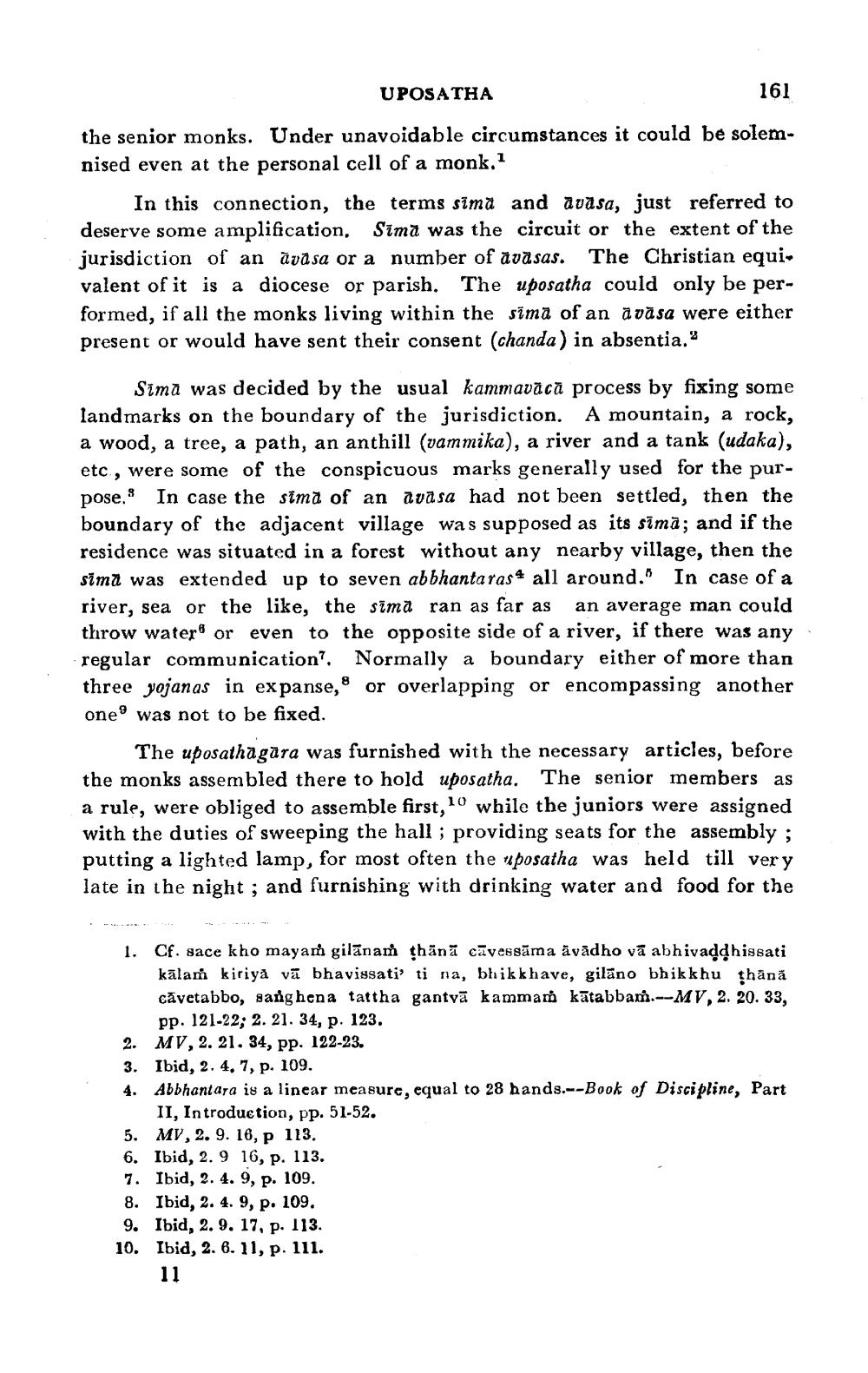________________
161 the senior monks. Under unavoidable circumstances it could be solemnised even at the personal cell of a monk.1
In this connection, the terms sima and avasa, just referred to deserve some amplification, Sima was the circuit or the extent of the jurisdiction of an avasa or a number of avasas. The Christian equi valent of it is a diocese or parish. The uposatha could only be performed, if all the monks living within the sima of an avăsa were either present or would have sent their consent (chanda) in absentia."
UPOSATHA
Sima was decided by the usual kammavācā process by fixing some landmarks on the boundary of the jurisdiction. A mountain, a rock, a wood, a tree, a path, an anthill (vammika), a river and a tank (udaka), etc., were some of the conspicuous marks generally used for the purpose. In case the sima of an avasa had not been settled, then the boundary of the adjacent village was supposed as its sima; and if the residence was situated in a forest without any nearby village, then the sima was extended up to seven abbhantaras all around." In case of a river, sea or the like, the sima ran as far as an average man could throw water" or even to the opposite side of a river, if there was any regular communication". Normally a boundary either of more than three yojanas in expanse, or overlapping or encompassing another one was not to be fixed.
The uposathagara was furnished with the necessary articles, before the monks assembled there to hold uposatha. The senior members as a rule, were obliged to assemble first, 10 while the juniors were assigned with the duties of sweeping the hall; providing seats for the assembly; putting a lighted lamp, for most often the uposatha was held till very late in the night; and furnishing with drinking water and food for the
1.
Cf. sace kho mayam gilānam thānā cavessāma āvādho vā abhivadḍhissati kālam kiriya va bhavissati' ti na, bhikkhave, gilāno bhikkhu thānā cavetabbo, sang hena tattha gantvä kammam katabbam.--MV, 2. 20. 33, pp. 121-22; 2. 21. 34, p. 123.
2. MV, 2. 21. 34, pp. 122-23.
3. Ibid, 2. 4, 7, p. 109.
4. Abbhantara is a linear measure, equal to 28 hands.--Book of Discipline, Part II, Introduction, pp. 51-52.
5. MV, 2. 9. 16, p 113.
6. Ibid, 2.9 16, p. 113.
7. Ibid, 2. 4. 9, p. 109.
8. Ibid, 2. 4. 9, p. 109. 9. Ibid, 2. 9. 17, p. 113.
10. Ibid, 2. 6. 11, p. 111.
11




